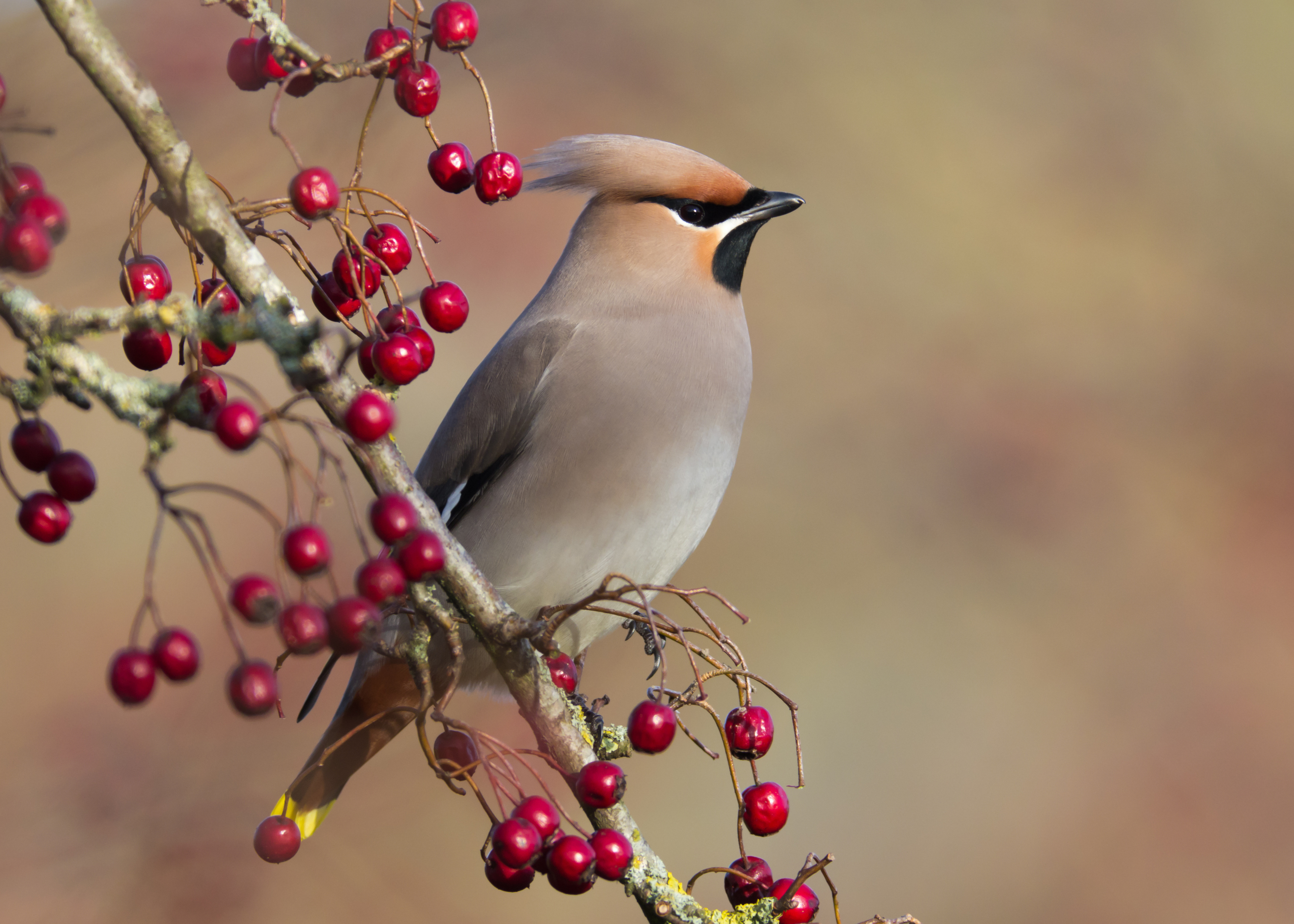
UNUSUAL migrant birds could be seen in UK gardens in the cold snap, experts said as they urged people to take part in the world’s biggest wildlife survey.
More than half a million people are expected to take part in this year’s RSPB Big Garden Birdwatch, which is taking place over three days for the first time.
The RSPB said this winter there had been reports of hundreds of waxwings, birds with dusky pink colouring with a black strip across the eye and a punk-like crest, arriving along the east coast from Scandinavia and dispersing as far as Ireland and Wales.
Waxwings do not visit the UK every year, but arrive in droves – known as an “irruption” – every seven or eight years, when food is scarce in their northern breeding grounds.
Households with rowan or crab-apple trees in their garden in particular should look out for the “charismatic migrants”, the RSPB said.
Nature lovers should also keep an eye out for other Scandinavian visitors including redwings and fieldfares, which are also making the most of the UK’s bumper berry crop.
Last year, the house sparrow was the most commonly-seen bird in UK gardens.
The milder weather saw an increase in the number of small birds seen, such as long-tailed tits.
House sparrows were the most commonly spotted bird in the survey last year, although they have seen numbers tumble almost 58% since the Big Garden Birdwatch began in 1979.
The mild winter last year saw an increase in the number of small birds, such as long-tailed tits, which were seen in gardens.
This year, the survey takes place on January 28-30, with members of the public asked to spend an hour watching and recording the birds in their garden or local public space, and then to send their results to the RSPB.
People taking part are also being urged to report some of the other wildlife they have seen in their gardens in the past year, including grass snakes, hedgehogs, stag beetles, stoats and moles.
Daniel Hayhew, RSPB conservation scientist, said: “With over half a million people now regularly taking part, coupled with over 30 years of data, Big Garden Birdwatch allows us to monitor trends and help us understand how birds are faring.
“With results from so many gardens, we are able to create a snapshot of the birds visiting at this time of year across the UK.
“Even if you see nothing during your Big Garden Birdwatch hour, that’s important information too, so please let us know.”
He added: “Our wildlife is facing a tough time. For example it is estimated that we’ve lost more than half of our hedgehogs in the last 50 years.
“We’re going to include this part of the survey every year now, enabling us to monitor the distribution of our other wildlife as well as trends in bird numbers.”
For more information, people can visit: rspb.org.uk/birdwatch

Enjoy the convenience of having The Sunday Post delivered as a digital ePaper straight to your smartphone, tablet or computer.
Subscribe for only £5.49 a month and enjoy all the benefits of the printed paper as a digital replica.
Subscribe